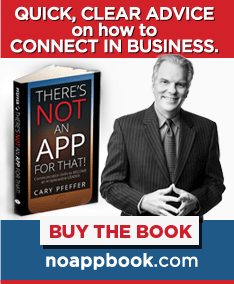If you’ve ever had to suffer through a clumsy, poorly-run breakfast, lunch or dinner event, you know the pain it can cause. Often it is meant to raise money for a good cause. The effect is just the opposite as people run for the exits when it’s over (or before). So, hoping to save us all from dismal events in the future, here is a quick guide to running a great speaker program!
Respect the Audience’s Time: One of the greatest goodwill builders for these events is to get done on time. And it’s amazing how often organizations violate that rule! Well intentioned people think, “This is our big chance so we have to take full advantage of it,” but they only leave people frustrated and goof up audience members schedules for the rest of the day. Build on the credibility of your organization by sticking to the schedule and reflect values of respect and discipline by showing you can do it!
Pick Your Speakers Carefully: Who should get microphone time at your event? Here are some suggestions: Sponsors should mostly talk about the organization or cause, NOT about themselves. Leaders of the organization should be selected based on their skill and passion, NOT on their title. (Who are your best, disciplined communicators? Get them up there!) Finally, the keynote should demonstrate an ability to actually talk to the people in front of them, NOT from a stale script they just keep delivering over and over. Sure they may tell a few stories over again, but they should be required to start and finish with a personalized message to the audience they are standing before. (Not easy to find!)
Invest in a Quality Room, Sound Equipment and Personnel: Who cares what your message is if the audience has to struggle hear it? The money you invest in the tools of a quality meeting will pay major dividends. If you can’t afford it, your group isn’t ready to pull together an event like this.
Practice: Everyone in your organization should deliver a full practice presentation at least twice. Once “back at the office” as you prepare in the final days before the event and then again in the hours before the event in the room where it will be held. (Your meeting planners should have everything in place long before the doors open so a rehearsal can take place.) A quality keynote speaker will also appreciate being able to “try out” the room before the audience comes in to make sure everything is ready to run smoothly.
Finally, it’s all about the audience. It is NOT about someone’s ego or need to be in the spotlight. Always keep the people who are in those seats uppermost in your mind. They are not just props to be used for your big event. They are potential advocates who can go out and tell your story a thousand times over.
If you do your job well, they will be telling a very good story – and everyone will benefit.
Please follow along through the month @CaryPfeffer
Cary Pfeffer is the founder of ClearComm Consulting, www.clear-comm.net, a Scottsdale, AZ communications consulting firm that helps people tell their story. He works with clients to make the most of their media and live audience communication. Email him at: [email protected].

